| | Yehuda Lave, Spiritual Advisor and Counselor |
|
|
The Torah View Of Man From the Torah viewpoint humans are the goals and the purpose of the entire creation. Without the Torah perspective, there is no essential difference between a human and a donkey. Someone looking at the world from a completely secular viewpoint has no basis for the value of man. On the philosophical level, man would have no more inherent worth than any other piece of matter. As a result some animal lovers think that the animals have more value than people.
I gave a summary of the Succot laws from Wickapedia yesterday. The Hebrew dates were of course correct but the English dates they showed were confusing. Possible it was from a previous year. To make sure there is no confusion, I have attached the full Chabad Calander below with detailed technical dates.
Love Yeuda Lave |
|
|
| | October 1–4—Tishrei 11–14 As soon as the solemn day of Yom Kippur is behind us, we focus on the traditions of the upcoming holiday of Sukkot. These four days between Yom Kippur and Sukkot are characterized by frenetic activity—purchasing of the Four Kinds, erecting the sukkah hut, inviting guests for the forthcoming holiday, shopping for and preparing all the meals, and purchasing new clothing in honor of the holiday. Click here for a purchaser's guide for the Four Kinds. Click here for a sukkah building guide. Click here for traditional holiday recipes. | | | Wednesday | October 4—Tishrei 14
The Day Before Sukkot It is customary to bind together the Four Kinds—the lulav, hadassim and aravot—today, while in the sukkah. Click here to learn how. Since the festival begins on a Wednesday night, we prepare an eruv tavshilin. On the day before Sukkot it is traditional to give extra charity, for true joy is sharing with others. Women and girls light candles—preferably in the sukkah—in order to usher in the holiday. Click here for the text of the blessings, and here for local candle-lighting times. Click here for a summary of the laws of Yom Tov. Click here for a digest of the laws of dwelling in the sukkah. After evening prayers, we enjoy a holiday meal. Even if it is pouring rain, on this night it is a mitzvah to at least make kiddush and eat an ounce of challah in the sukkah. We dip the challah in honey. The group of supernal guests—Abraham, Isaac, Jacob, Moses, Aaron, Joseph and David—who grace our sukkahs throughout the holiday (known as ushpizin) are tonight and tomorrow led by our Patriarch Abraham. The chassidic entourage of ushpizin—consisting of the Baal Shem Tov, the Maggid of Mezeritch, the Alter Rebbe, the Mitteler Rebbe, the Tzemach Tzedek, the Rebbe Maharash, the Rebbe Rashab and the Rebbe Rayatz—is led by the Baal Shem Tov. Tonight begins the Simchat Beit Hasho'eivah celebrations. It is customary to dance and sing in commemoration of the water-drawing festivals held nightly in the Holy Temple throughout the holiday of Sukkot. Click here for more on Simchat Beit Hasho'eivah. | | | Thursday | October 5—Tishrei 15
1st day of Sukkot We shake the Four Kinds. Click here for a how-to guide. Morning service. Full Hallel is recited, followed by the Hoshanot (circling of the synagogue's reading table with the Four Kinds, while reciting special prayers petitioning G‑d for ample livelihood in the coming year).
Two Torah scrolls are taken out of the ark.
Torah reading: Leviticus 22:26–23:44 and Numbers 29:12–16.
Haftorah: Zechariah 14:1–21. The priests bless the congregation with the priestly blessing during the Musaf prayer. Festive lunch meal in the sukkah. We dip the challah in honey. After dark, women and girls light candles—preferably in the sukkah—for the second day of Sukkot, using an existing flame. Click here for the text of the blessings, and here for local candle-lighting times. After evening prayers, a festive holiday meal in the sukkah. We dip the challah in honey. The group of supernal guests—Abraham, Isaac, Jacob, Moses, Aaron, Joseph and David—who grace our sukkahs throughout the holiday (known as ushpizin) are tonight and tomorrow led by our Patriarch Isaac. The chassidic entourage of ushpizin—consisting of the Baal Shem Tov, the Maggid of Mezeritch, the Alter Rebbe, the Mitteler Rebbe, the Tzemach Tzedek, the Rebbe Maharash, the Rebbe Rashab and the Rebbe Rayatz—is led by the Maggid of Mezeritch. Simchat Beit Hasho'eivah celebrations continue. It is customary to dance and sing in commemoration of the water-drawing festivals held nightly in the Holy Temple throughout the holiday of Sukkot. Click here for more on Simchat Beit Hasho'eivah. | | | Friday | October 6—Tishrei 16
2nd Day of Sukkot
We shake the Four Kinds. Click here for a how-to guide. Morning service. Full Hallel is recited, followed by the Hoshanot (circling of the synagogue's reading table with the Four Kinds, while reciting special prayers petitioning G‑d for ample livelihood in the coming year).
Two Torah scrolls are taken out of the ark.
Torah reading: Leviticus 22:26–23:44 and Numbers 29:12–16.
Haftorah: I Kings 8:2–21. The priests bless the congregation with the priestly blessing during the Musaf prayer. Festive lunch meal in the sukkah. We dip the challah in honey. Afternoon prayers. If you performed an eruv tavshilin on Wednesday, cook the foods necessary for Shabbat, using a flame that has been lit from the onset of the holiday. 18 minutes before sunset, women and girls light candles -- preferably in the sukkah -- for Shabbat, using an existing flame. Click here for the text of the blessing, and here for local candle lighting times. After abridged Shabbat evening prayers (with the addition of the Yaaleh Veyavo insert in the Amidah) festive Shabbat meal in the sukkah. The group of supernal guests—Abraham, Isaac, Jacob, Moses, Aaron, Joseph and David -- who grace our sukkahs throughout the holiday (known as ushpizin) are tonight and tomorrow led by our Patriarch Jacob. The chassidic entourage of ushpizin—consisting of the Baal Shem Tov, the Maggid of Mezeritch, the Alter Rebbe, the Mitteler Rebbe, the Tzemach Tzedek, the Rebbe Maharash, the Rebbe Rashab and the Rebbe Rayatz—is led by the Alter Rebbe. Simchat Beit Hasho'eivah celebrations continue. It is customary to dance and sing in commemoration of the water-drawing festivals held nightly in the Holy Temple throughout the holiday of Sukkot. And now that the holiday has concluded, the festivities are often accompanied by live music. Click here for more on Simchat Beit Hasho'eivah. Celebrate Sukkot's Chol Hamoed ("intermediate days"). Between now and Shemini Atzeret, we may resume much (not all) of our regular, workday activities (not on Shabbat), but, of course, we continue to eat in the sukkah. It is customary to drink a glass of wine each day, in celebration of the festival. Click here for a digest of the laws of Chol Hamoed. | | | Shabbat | October 7—Tishrei 17
3rd day of Sukkot
Chol Hamoed We do not take the Four Kinds today in observance of Shabbat. Morning service: Normal Shabbat prayers, with the addition of the Yaaleh Veyavo insert in the Amidah.
Complete Hallel is recited. Two Torah scrolls are taken out of the ark.
Torah reading: Exodus 33:12–34:26 and Numbers 29:17–22.
Haftorah: Ezekiel 38:18-39:15. Holiday Musaf amidah. Afternoon prayers. Evening prayers. After nightfall, perform the Havdalah ceremony. The group of supernal guests—Abraham, Isaac, Jacob, Moses, Aaron, Joseph and David—who grace our sukkahs throughout the holiday (known as ushpizin) are tonight and tomorrow led by Moses. The chassidic entourage of ushpizin—consisting of the Baal Shem Tov, the Maggid of Mezeritch, the Alter Rebbe, the Mitteler Rebbe, the Tzemach Tzedek, the Rebbe Maharash, the Rebbe Rashab and the Rebbe Rayatz—is led by the Mitteler Rebbe. Simchat Beit Hasho'eivah celebrations continue. It is customary to dance and sing in commemoration of the water-drawing festivals held nightly in the Holy Temple throughout the holiday of Sukkot. Click here for more on Simchat Beit Hasho'eivah. Click here for a Sukkot event in your location. | | | Sunday | October 8—Tishrei 18
4th day of Sukkot
2nd day of Chol Hamoed (intermediate day) We shake the Four Kinds. Click here for a how-to guide. Morning service: In many communities, throughout the intermediate days of Sukkot, tefillin are not worn.
Full Hallel is recited, followed by the Hoshanot (circling of the synagogue's reading table with the Four Kinds, while reciting special prayers petitioning G‑d for ample livelihood in the coming year). We say today's section of Hoshanot.
One Torah scroll is taken out of the ark.
Torah reading: Numbers 29:20–28. The Musaf amidah is recited. During all of the intermediate days, Yaaleh Veyavo is inserted during all prayers and in the Grace After Meals. Chol Hamoed (the "intermediate days") are observed with limited work restriction. Click here for a digest of the laws of Chol Hamoed. The group of supernal guests—Abraham, Isaac, Jacob, Moses, Aaron, Joseph and David—who grace our sukkahs throughout the holiday (known as ushpizin) are tonight and tomorrow led by Aaron the high priest. The chassidic entourage of ushpizin—consisting of the Baal Shem Tov, the Maggid of Mezeritch, the Alter Rebbe, the Mitteler Rebbe, the Tzemach Tzedek, the Rebbe Maharash, the Rebbe Rashab and the Rebbe Rayatz—is led by the Tzemach Tzedek. Simchat Beit Hasho'eivah celebrations continue. It is customary to dance and sing in commemoration of the water-drawing festivals held nightly in the Holy Temple throughout the holiday of Sukkot. Click here for more on Simchat Beit Hasho'eivah. Click here for a Sukkot event in your location. | | | Monday | October 9—Tishrei 19
5th day of Sukkot
3rd day of Chol Hamoed (intermediate day) We shake the Four Kinds. Click here for a how-to guide. Morning service: In many communities, throughout the intermediate days of Sukkot, tefillin are not worn.
Full Hallel is recited, followed by the Hoshanot (circling of the synagogue's reading table with the Four Kinds, while reciting special prayers petitioning G‑d for ample livelihood in the coming year).
One Torah scroll is taken out of the ark.
Torah reading: Numbers 29:23–31. The Musaf amidah is recited. During all of the Intermediate Days, Yaaleh Veyavo is inserted during all prayers and in the Grace After Meals. Chol Hamoed (the "intermediate days") are observed with limited work restriction. Click here for a digest of the laws of Chol Hamoed. The group of supernal guests—Abraham, Isaac, Jacob, Moses, Aaron, Joseph and David—who grace our sukkahs throughout the holiday (known as ushpizin) are tonight and tomorrow led by Joseph. The chassidic entourage of ushpizin—consisting of the Baal Shem Tov, the Maggid of Mezeritch, the Alter Rebbe, the Mitteler Rebbe, the Tzemach Tzedek, the Rebbe Maharash, the Rebbe Rashab and the Rebbe Rayatz—is led by the Rebbe Maharash. Simchat Beit Hasho'eivah celebrations continue. It is customary to dance and sing in commemoration of the water-drawing festivals held nightly in the Holy Temple throughout the holiday of Sukkot. Click here for more on Simchat Beit Hasho'eivah. Click here for a Sukkot event in your location. | | | Tuesday | October 10—Tishrei 20
6th day of Sukkot
4th day Chol Hamoed We shake the Four Kinds. Click here for a how-to guide. Holiday Musaf amidah is recited. During all of the Intermediate Days, Yaaleh Veyavo is inserted during all prayers and in the Grace After Meals. The group of supernal guests—Abraham, Isaac, Jacob, Moses, Aaron, Joseph and David -- who grace our sukkahs throughout the holiday (known as ushpizin) are tonight and tomorrow led by King David. The chassidic entourage of ushpizin—consisting of the Baal Shem Tov, the Maggid of Mezeritch, the Alter Rebbe, the Mitteler Rebbe, the Tzemach Tzedek, the Rebbe Maharash, the Rebbe Rashab and the Rebbe Rayatz—is led by the Rebbe Rashab. Simchat Beit Hasho'eivah celebrations continue. It is customary to dance and sing in commemoration of the water-drawing festivals held nightly in the Holy Temple throughout the holiday of Sukkot. Click here for more on Simchat Beit Hasho'eivah. Click here for a Sukkot event in your location. Tonight and tomorrow is Hoshana Rabbah. It is customary in many communities to remain awake all night. It is traditional to recite the Book of Deuteronomy before midnight, and the Book of Psalms after midnight. | | | Wednesday | October 11—Tishrei 21
7th day of Sukkot
5th day of Chol Hamoed (intermediate day)
Hoshana Rabbah We shake the Four Kinds. Click here for a how-to guide. Morning service: In many communities, throughout the intermediate days of Sukkot, tefillin are not worn.
Before Hallel, we remove the upper two bands from the lulav. Full Hallel is recited, followed by the Hoshanot (circling of the synagogue's reading table with the Four Kinds, while reciting special prayers petitioning G‑d for ample livelihood in the coming year). During today's Hoshanot we circle the reading table seven times, followed by several pages of special prayers, wherein we ask G‑d to bless us with abundant rain. At the conclusion of the Hoshanot we take a bundle of five willows, and with it we strike the ground five times.
One Torah scroll is taken out of the ark.
Torah reading: Numbers 29:26–34. The Musaf amidah is recited. During all of the intermediate days, Yaaleh Veyavo is inserted during all prayers and in the Grace After Meals. Chol Hamoed (the "intermediate days") are observed with limited work restrictions. Click here for a digest of the laws of Chol Hamoed. Many have the custom to eat kreplach—ground beef- or chicken-filled dough, folded into triangles—on this day. Click here for a recipe. These are usually eaten during the festive lunch meal, during which one also washes over challah or bread. Click here for more about Hoshana Rabbah. Tonight is Shemini Atzeret. Since the festival begins on a Wednesday night, we prepare an eruv tavshilin. Women and girls light candles—preferably in the sukkah—in order to usher in the holiday. Click here for the text of the blessings, and here for local candle-lighting times. Please refer to our Shemini Atzeret/Simchat Torah Calendar for further instructions. | | |
|
The Beatles - Real Love
https://www.youtube.com/watch?v=ax7krBKzmVI
The Beatles - Don't Let Me Down
https://www.youtube.com/watch?v=NCtzkaL2t_Y
Written by John as an expression of his love for Yoko Ono, the song is heartfelt and passionate. As John told Rolling Stone magazine in 1970, "When it gets down to it, when you're drowning, you don't say, 'I would be incredibly pleased if someone would have the foresight to notice me drowning and come and help me,' you just scream." During filming on the roof of Apple, two days after the recording of the track, the band played 'Don't Let Me Down' right after doing two versions of 'Get Back' and it led straight into 'I've Got A Feeling'. Michael Lindsay-Hogg was once again directing a Beatles' shoot. He and Paul met regularly at the tail end of 1968, while Hogg was directing The Rolling Stones Rock and Roll Circus, to discuss the filming of The Beatles' session in January. By the time that fateful Thursday came around, the penultimate day of January would be the last time The Beatles ever played together in front of any kind of audience. |
|
|
Archaeologists solve the mystery of the Great Pyramid By George Sandeman, The Sun September 24, 2017 | 3:43pm  The Great Pyramid of GizaGetty Images New evidence proves that the ancient Egyptians constructed the Great Pyramid at Giza by transporting 170,000 tons of limestone in boats. It has long been known that the rock was extracted eight miles away in Tura and that granite used in the monumental structure was quarried 533 miles away in Aswan. However, archaeologists have disagreed over how the material was transported to Giza, now part of modern-day Cairo, for construction of Pharaoh Khufu's tomb in 2600 BC. Now that mystery could be a step further to being solved after the discovery of an ancient scroll of papyrus, a ceremonial boat and a network of waterways, reported the Mail on Sunday. The new evidence shows that thousands of laborers transported 170,000 tons of limestone along the River Nile in wooden boats built with planks and rope. The 2.5-ton blocks were ferried through a system of specially designed canals before arriving at an inland port built just yards away from the base of the Great Pyramid. The papyrus scroll is the only firsthand record of how the pyramid was built, and was written by an overseer named Merer. He explained in detail how the limestone was moved from the quarry in Tura to Giza using the Bronze Age waterways. Archaeologist Mark Lehner has also uncovered evidence of a waterway underneath the plateau the pyramid sits on. He said: "We've outlined the central canal basin, which we think was the primary delivery area to the foot of the Giza Plateau." |
|
|
what-archaeologists-found-in-an-ancient-tomb
http://www.msn.com/en-us/video/wonder/what-archaeologists-found-in-an-ancient-tomb/vi-AAsp5ng |
|
|
12-seriously-painful-band-breakups
|
|
|
Afterlife snack: Jar of toads popped open in 4,000-year-old Canaanite tomb dig Excavation just outside Jerusalem's Biblical Zoo gives window into funerary rites, with unexpected remains of decapitated frogs and not-local myrtle and date pollen
ut a jar at a Canaanite burial site near Jerusalem's Biblical Zoo. (Shua Kisilevitz, Israel Antiquities Authority) A 4,000-year-old Canaanite "burial kit" has been found in Jerusalem that includes an afterlife snack pack of nine decapitated toads. Discovered in a salvage excavation near Jerusalem's Biblical zoo, a set of intact jars and their contents shed new light on funerary rites of the Middle Bronze period — and give a window into an ancient recipe for toad. The dig's co-director, Israel Antiquities Authority archaeologist Shua Kisilevitz, told The Times of Israel on Monday that while food offerings in burials are typical of the Bronze Age, "finding toads is pretty unusual," she said. "To the best of my knowledge, the only other place in Israel with toad find was in Wadi Ara, and dates to the Late Bronze Age." Get The Times of Israel's Daily Edition by email and never miss our top stories Free Sign Up 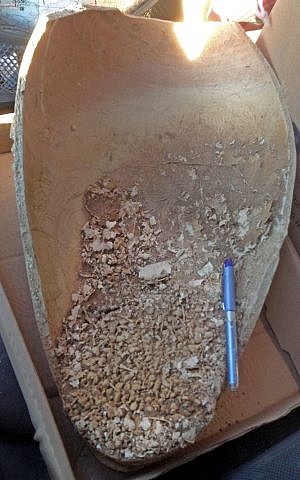 Jar with remains of the toads from a Canaanite burial site near Jerusalem's Biblical Zoo. (Zohar Turgeman-Yaffe, Israel Antiquities Authority) Generally, she said, excavators discover entire vessels filled with food which, it is thought, the deceased may need to get to the afterlife. The rare discovery of the toad bones, found in a jar placed in one of 67 man-made shaft tombs in a Middle Bronze cemetery located between the zoo and a nearby shopping mall, indicates it was part of the local settlers' diet. "We understand that this was part of the food consumed while still alive," she said. As to why the toads were decapitated, Kisilevitz said one possibility lies in a South American practice of removing heads and toes in order to more easily remove the animal's toxic skin. "It could be an indication that this is how they prepared the toads," she said. Toads are hardly the only creatures to be discovered in Middle Bronze Age burials. According to Near Eastern historian Graciela N. Gestoso Singer's article, " The Middle Bronze Age: Burial customs and tombs in Canaan," remains of sheep, goats, oxen and even gazelles are found as food offerings within burial sites. Additionally, "One of the most unusual and interesting features of MB II burial practices is the occasional occurrence of equine remains in tombs… the equine remains sometimes appear to have been given a ceremonial burial themselves." A 'lucky find'  Aerial photograph of the Canaanite cemetery excavation in Jerusalem, looking toward Ein Yael. (Griffin Higher Photography) The 2014 discovery of the burial shaft was a "lucky find," said Kisilevitz, discovered during a salvage excavation ahead of a Jerusalem neighborhood expansion project. "For an archaeologist, finding tombs that were intentionally sealed in antiquity is a priceless treasure, because they are a time capsule that allows us to encounter objects almost just as they were originally left," said Kisilevitz and co-dig director Zohar Turgeman-Yaffe in an IAA press release. "This section of the Nahal Repha'im basin was fertile ground for settlement throughout time, especially during the Canaanite period. In recent years excavations in the area have uncovered two settlement sites, two temples and a number of cemeteries, which provide new insight into the life of the local population at that time," they said. Canaanite cemeteries are found in other high-elevation parts of Jerusalem as well, said Kisilevitz, including the neighborhoods of Gilo and Givat Masua. As the team cleaned up debris from a 1991 excavation of two tombs conducted during a first stage of construction, they saw the circle stone that sealed the shaft's 40-centimeter diameter opening.  A dog looks on as David Tanami, an Israel Antiquities Authority archaeologist, works his way into the narrow tomb opening to bring out a jar at a Canaanite burial site near Jerusalem's Biblical Zoo. (Shua Kisilevitz, Israel Antiquities Authority) Unsealing it, the team discovered a 1-to-1.5 meter long shaft carved out of the hard limestone, which led to a small manmade cave of approximately 1.2-meter diameter and with a slight 80 centimeter height, she said. Inside was only one partial skeleton, which appeared to have been laid out in fetal position with his skull placed on a demarcated headrest. "The interesting thing is how did they get the body in?" pondered Kisilevitz. She said the narrow measurements of the burial shaft made it only possible to enter one person at a time, often headfirst, while others held the archaeologist's legs to pull him out. 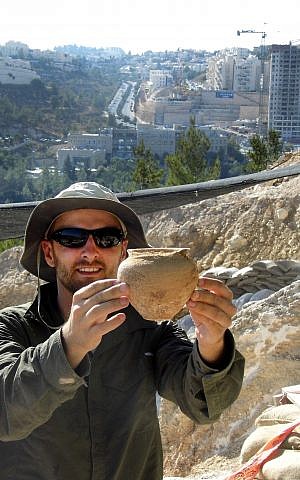 Alex Wigman, an Israel Antiquities Authority archaeologist, shows a jar brought out of the Canaanite tomb in Jerusalem. (Shua Kisilevitz, Israel Antiquities Authority) Aside from the toad jar, other intact pottery vessels were unearthed, upon which was discovered pollen from date palms and myrtle bushes, which are not indigenous to Jerusalem. Myrtle, said Kisilevitz, comes from the north, while dates are found in areas such as the Jordan Valley. "They had to have been planted," she said, which leads archaeologists to wonder if these plants played a role in the whole process of burial customs. New technology led to the recently finished analysis of the pollen by Dr. Dafna Langgut of Tel Aviv's Institute of Archaeology and Steinhardt Museum of Natural History, as well as the toad remains by Dr. Lior Weisbrod of the Zinman Institute of Archaeology at the University of Haifa. The scholars' research will be presented at an October 18 conference at the Hebrew University of Jerusalem called "New Studies in the Archaeology of Jerusalem and its Region," which is open to the public. |
|
|
9 of the most beautiful sukkot in Israel The Jewish harvest festival of Sukkot brings people outdoors into decorated 'huts,' but that doesn't mean the huts aren't luxurious.  The sukkah at the Waldorf Astoria Jerusalem. Photo by Perry Easy Right after Yom Kippur is over, the sound of hammers rings throughout Israel as people begin building temporary "huts" called sukkot ( sukkah in singular). The week-long harvest and thanksgiving festival of Sukkot (Tabernacles), this year from nightfall October 16 through October 23, brings many Israelis and tourists outdoors to dine (and sometimes sleep) in the sukkah with the stars peeking through the roof of branches, lumber or bamboo in keeping with biblical tradition. People typically decorate their sukkah with posters, paper chains, colored lights and hanging fruit. In fancy sukkot you might even see chandeliers and draperies. Here are nine impressive sukkot found from north to south. Tell us about your favorite Israeli sukkah in the comments section below. - The President's Sukkah
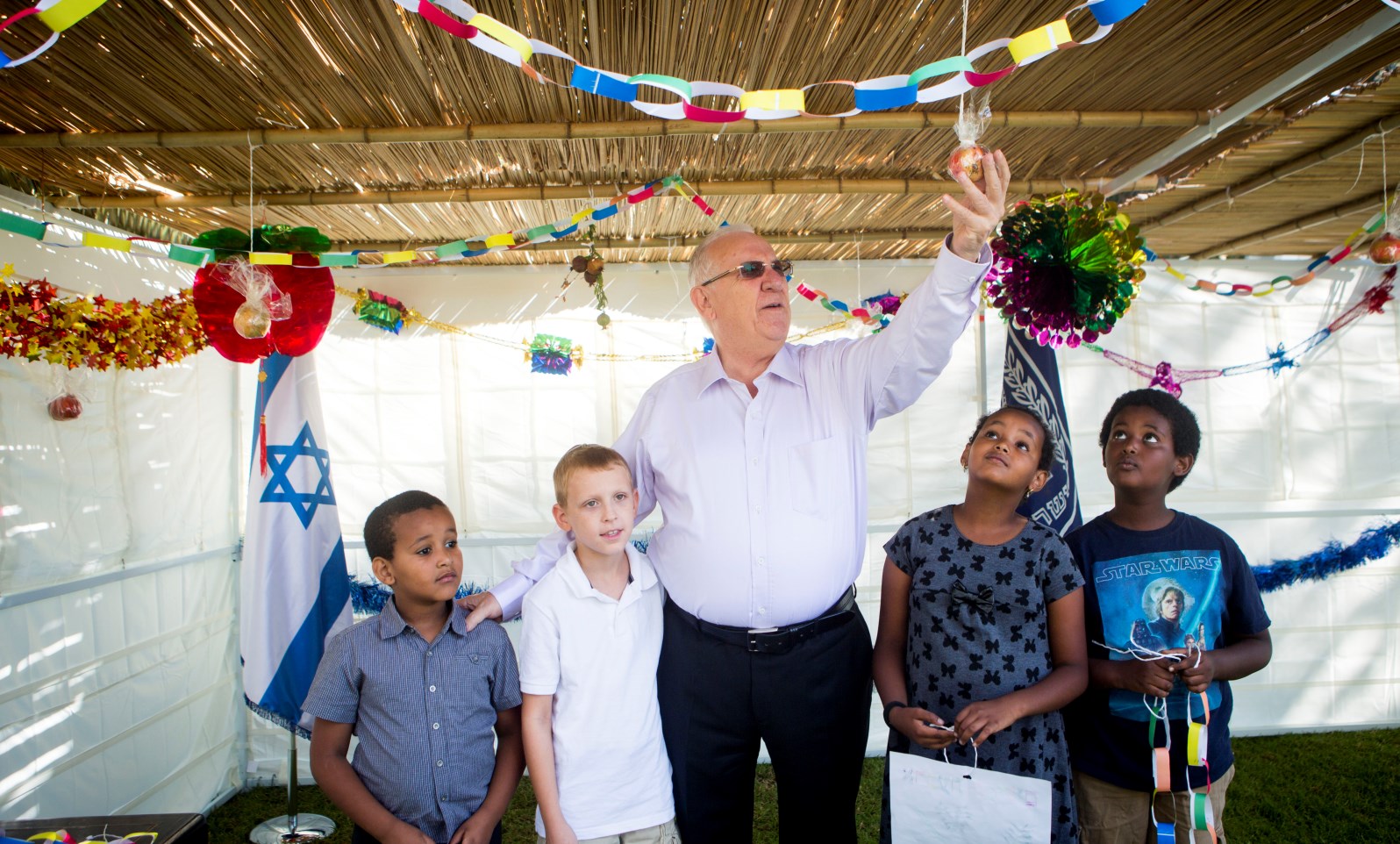 Every year, children are invited to help the Israeli president decorate the official sukkah in Jerusalem. Photo by Miriam Alster/FLASH90 Israeli President Reuven Rivlin and his wife, Nechama, will host their annual Sukkot open house on October 19 at their official residence in Jerusalem. Thousands of Israeli citizens and tourists visit the presidential sukkah each year and enjoy a variety of exhibits, entertainment and activities throughout the residence and its gardens. On October 18, the president's mobile sukkah will make a stop in Acre (Akko) to greet the public. Every year, a different city is chosen for the special event. 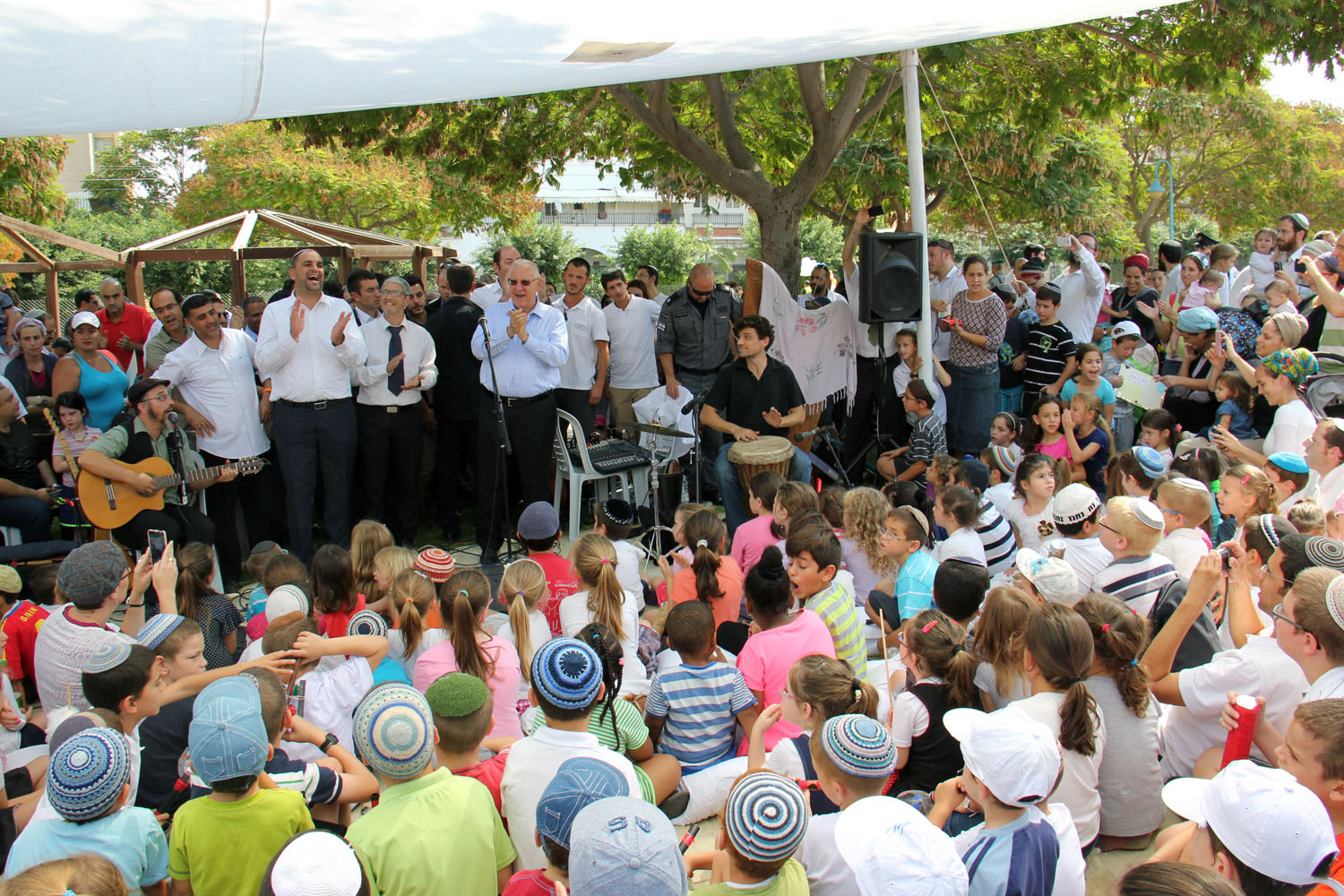 President Reuven Rivlin hosts children for entertainment in his mobile sukkah in Lod during the Sukkot holiday in 2014. Photo by Itzik Edri/GPO - Waldorf Astoria Jerusalem
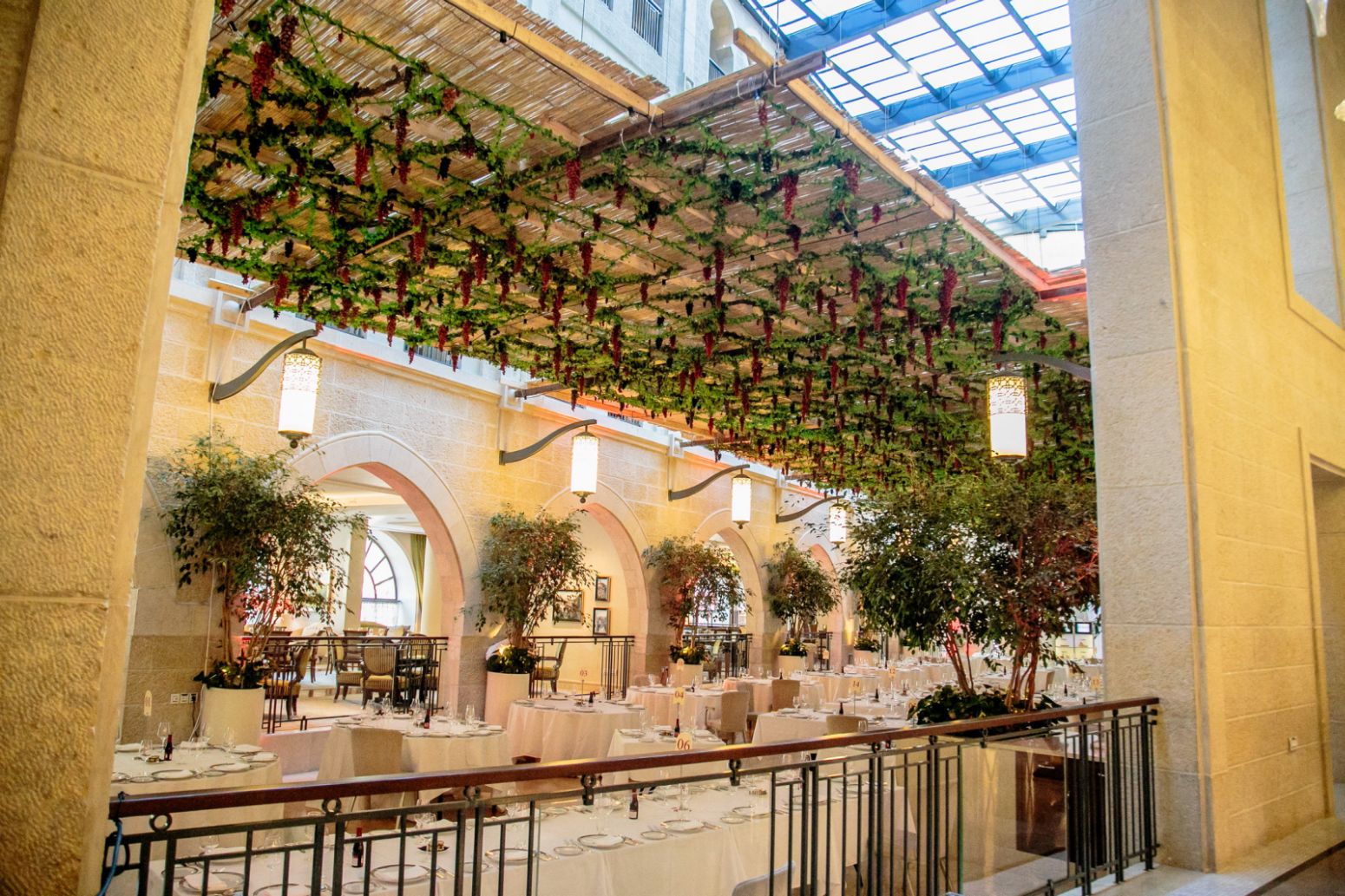 A side view of the atrium sukkah at the Waldorf Astoria Jerusalem. Photo by Perry Easy The Waldorf sets up its main sukkah right inside the hotel's lobby atrium under a retracting glass rooftop. This arrangement combines convenience with aesthetics: The temperature can be controlled, and if it starts to rain the staff simply closes the roof so there's no scramble to re-seat 200 diners. The sukkah-building team gets to work three weeks before the holiday, while the décor is planned months in advance. This year's theme is grapes and vineyards. The Waldorf also offers two other large sukkot, each seating between 200 and 260 people, as well as private sukkot for some of the luxury suites. - Inbal Jerusalem Hotel
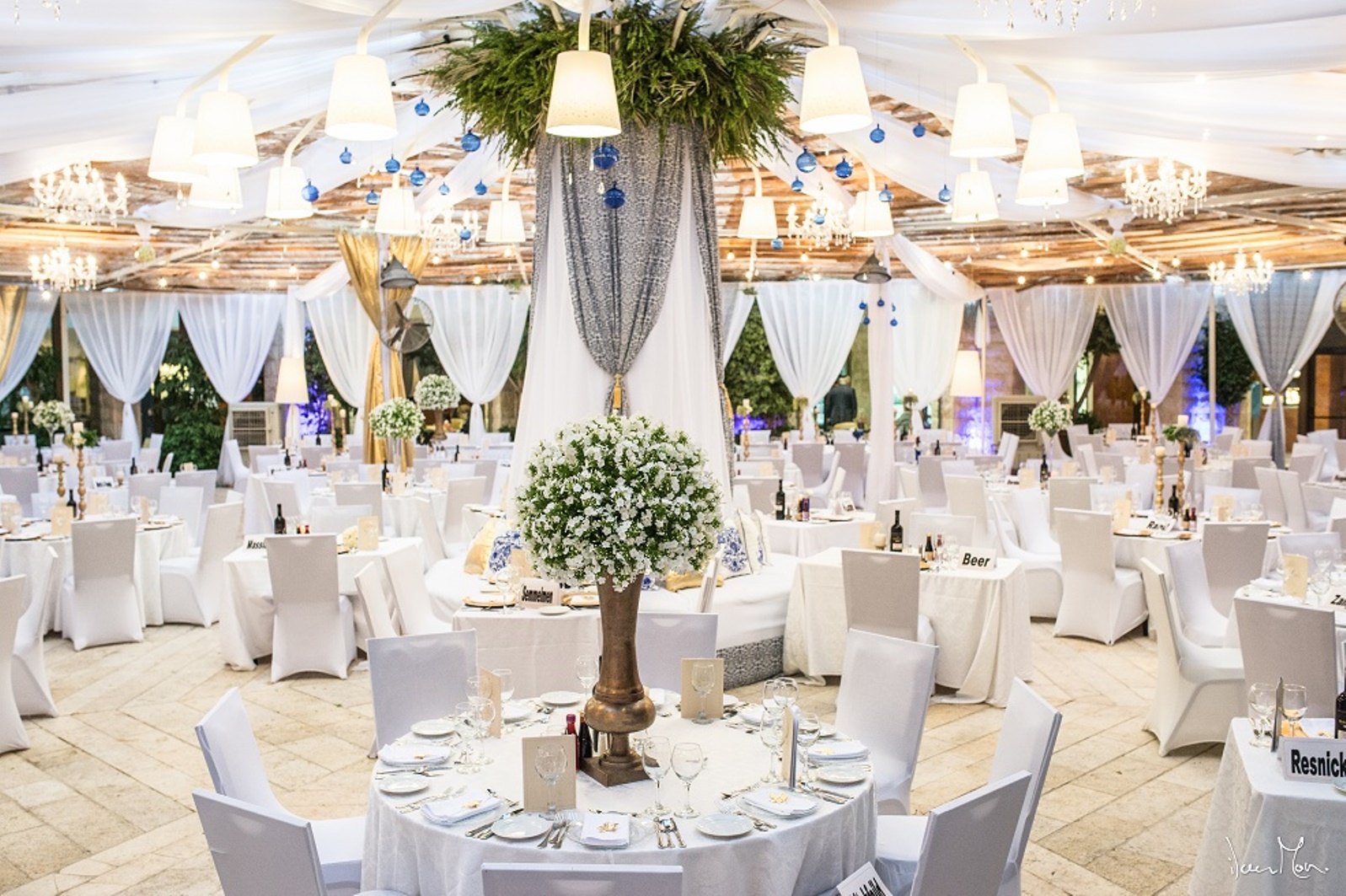 The sukkah in the courtyard of Jerusalem's Inbal Hotel. Photo: courtesy About one kilometer south of the Waldorf, the Inbal Hotel builds a lavish courtyard sukkah, measuring 25 square meters with a three-meter-high open roof. It takes a week to construct and decorate. For the second year in a row, the Inbal has engaged event planner Sarit Bustan to handle décor. The theme this year is "a visual and content experience revolving around a sky full of stars and fairy tales," a spokeswoman tells ISRAEL21c. The hotel also has a 200-square-meter balcony sukkah, 50-square-meter Executive Lounge sukkah with transparent walls, and private sukkot for suites. 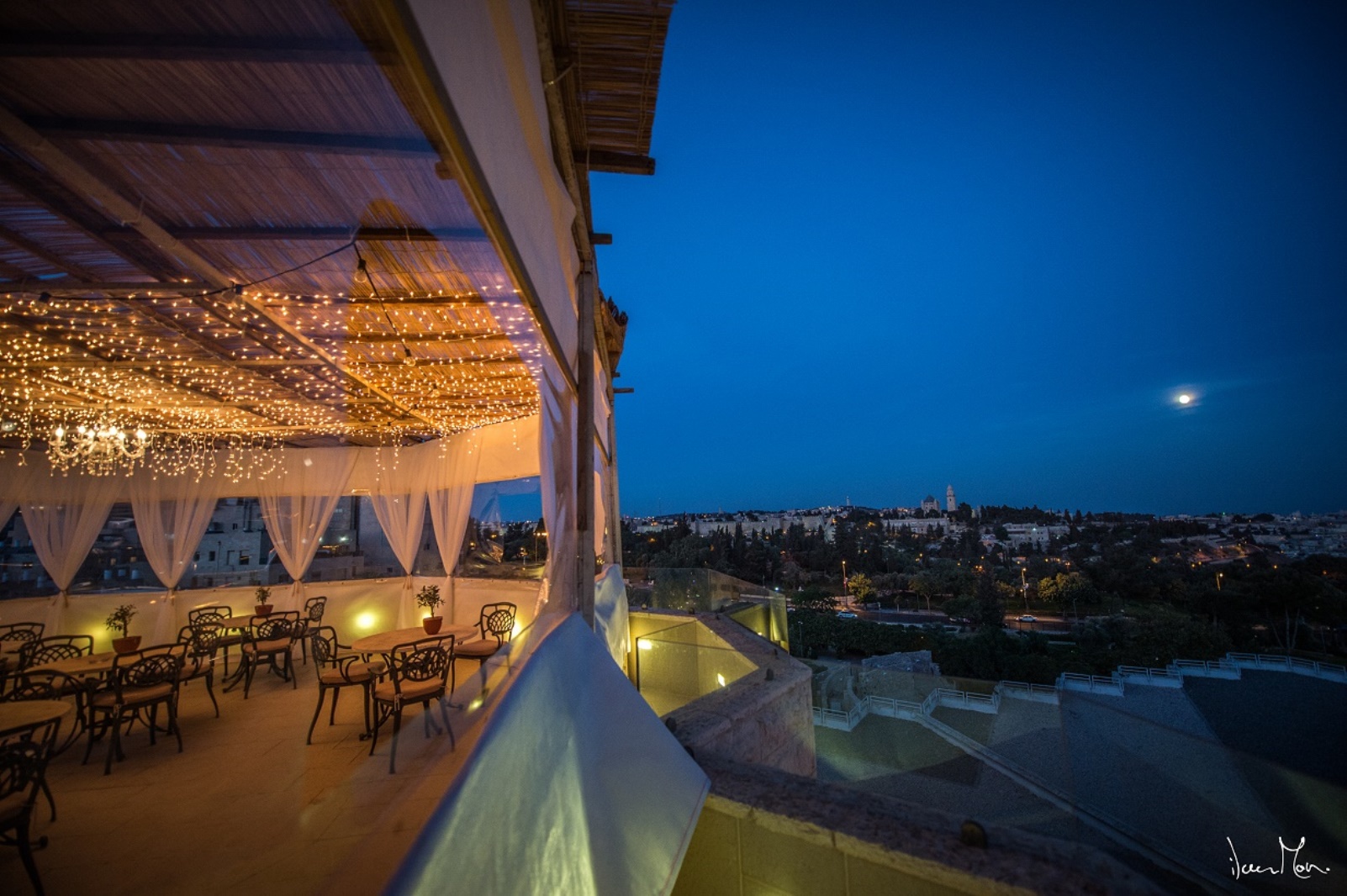 The balcony sukkah at the Inbal Hotel, overlooking Jerusalem. Photo: courtesy - Kibbutz Lotan
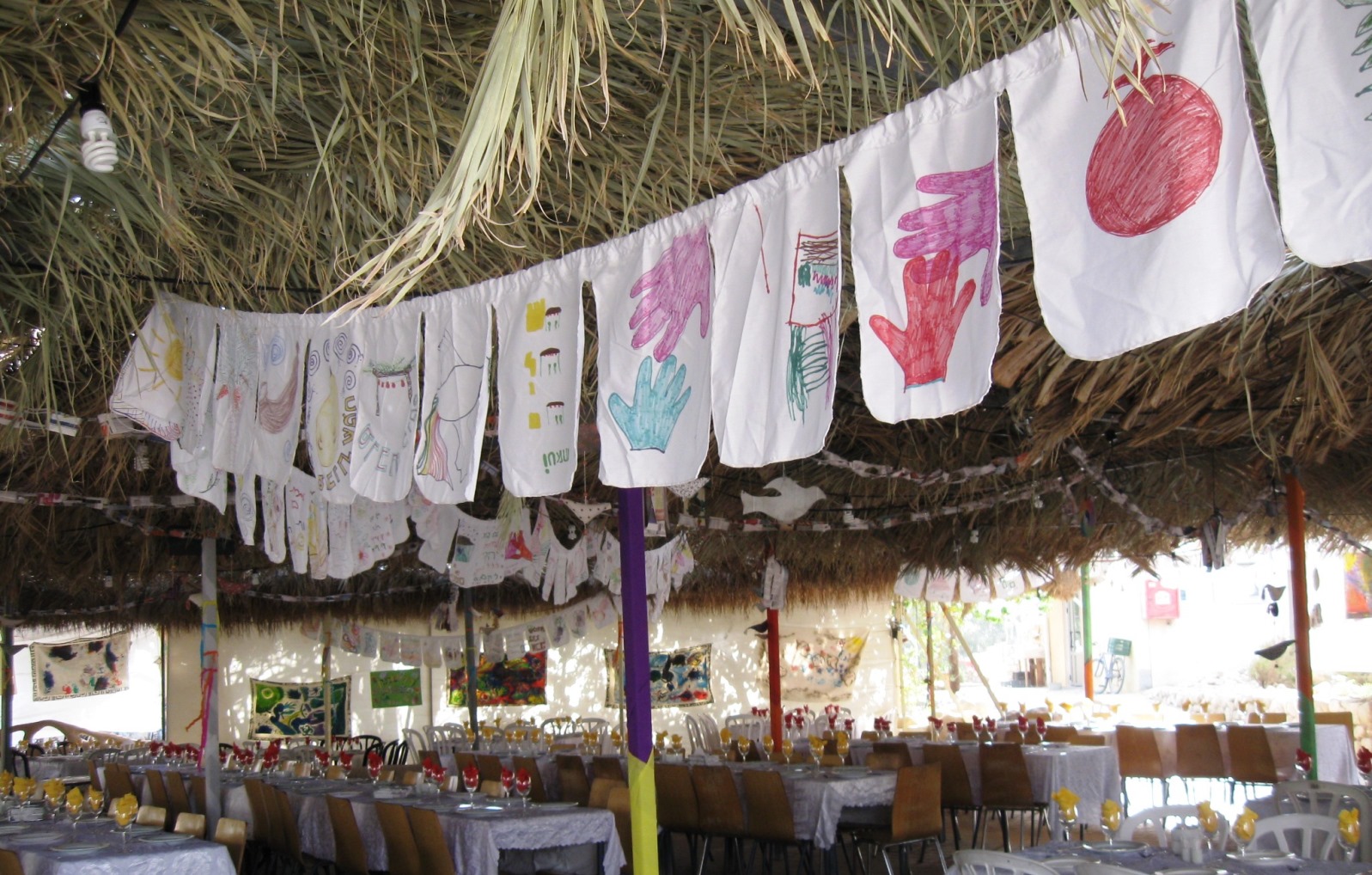 Inside Kibbutz Lotan's sukkah for 300. Photo by Alex Cicelsky/Kibbutz Lotan Center for Creative Ecology All the members of this eco-conscious Reform kibbutz in Israel's Arava Valley gather at the end of Yom Kippur, even before breaking their fast, to start building their communal sukkah. Measuring 200 square meters and seating 300 people, it's made from a steel frame manufactured on site, covered with date-palm branches cut from Lotan's orchard and decorated with murals handmade by members, youth and guests. - 'Most Beautiful Sukkah,' Kibbutz Tirat Zvi
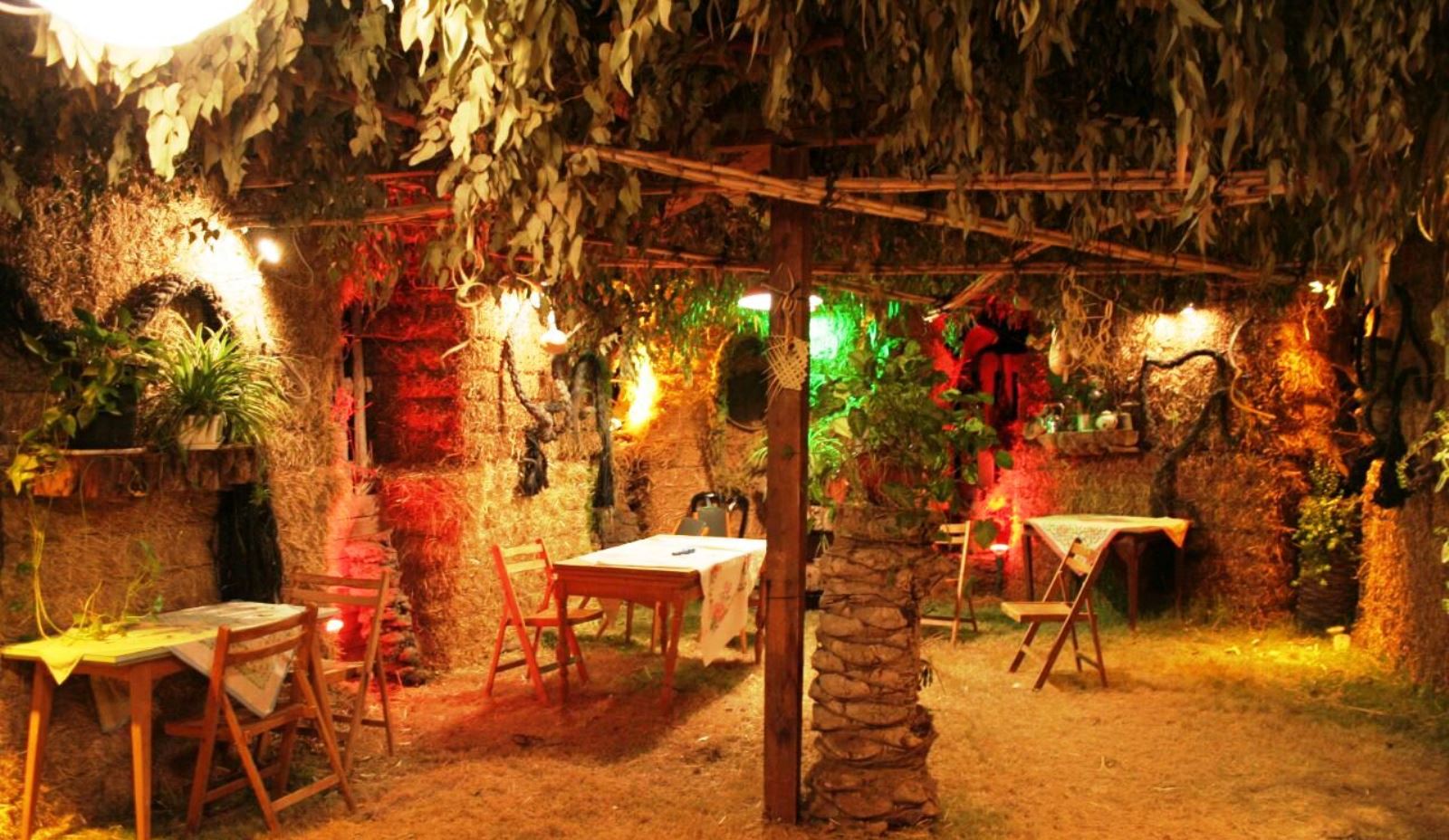 The award-winning straw-bale sukkah at Kibbutz Tirat Zvi. Photo courtesy of the Tirat Zvi Archive Many members of this kibbutz in the Beit She'an Valley build their own sukkot. This 12-by-8-meter structure built by Tirat Zvi date farmer Moshe Zakay and his neighbors, the Neeman family, won first prize last year in a "most beautiful sukkah" contest run by the regional council. It's built of octagonal straw bales and is decorated with kibbutz-grown fruit and Tirat Zvi artifacts. - Aish HaTorah World Center, Jerusalem
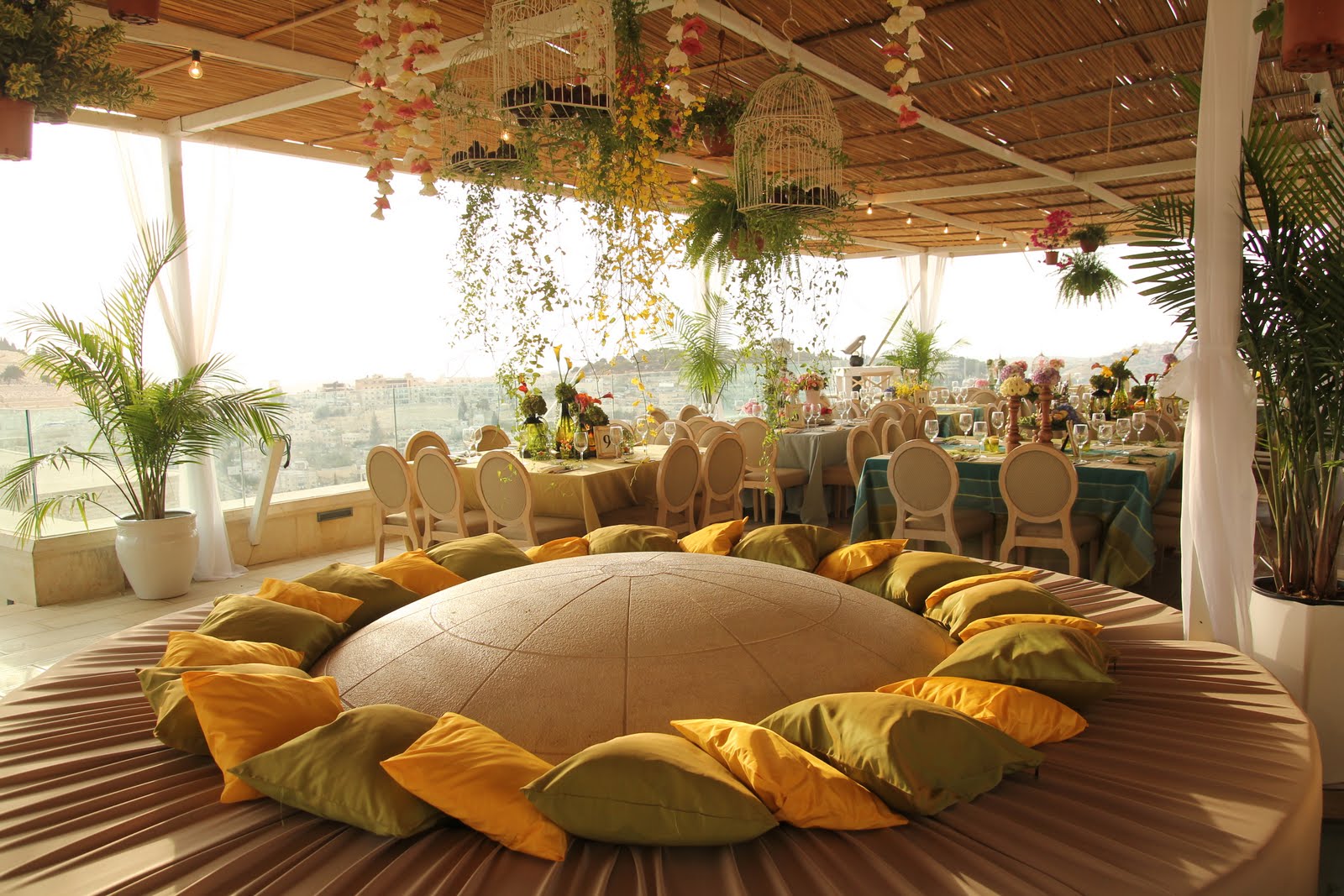 Aish HaTorah's sukkah overlooking the Western Wall plaza. Photo: courtesy The balcony of the Jerusalem world headquarters of global Jewish outreach organization Aish HaTorah is famed for its view of the Western Wall and Temple Mount. Before Sukkot, a team of 10 people works about 12 hours to transform the balcony into a luxurious sukkah measuring 400 square meters and seating 300 people. - Tel Aviv municipality
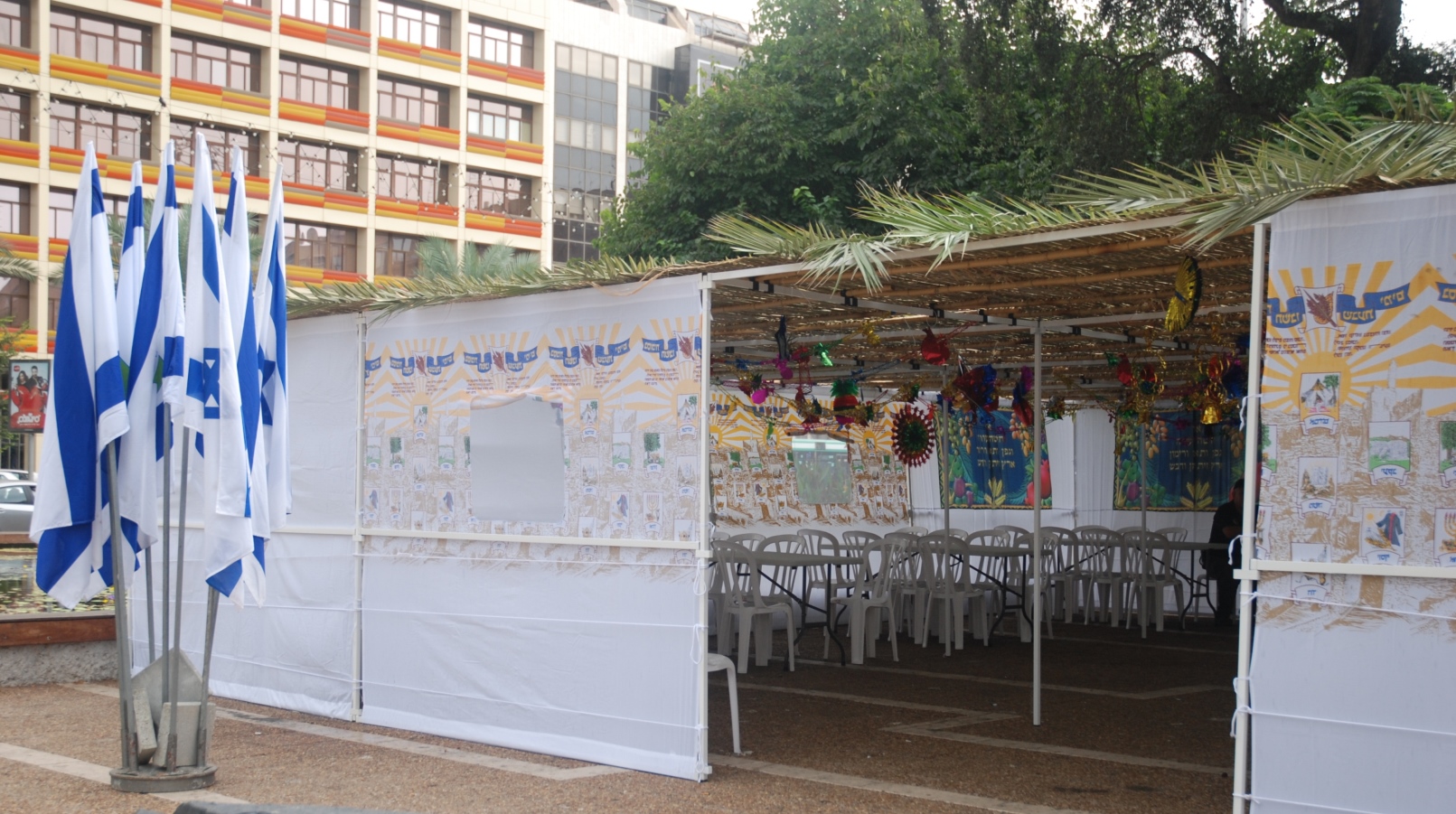 The sukkah in Rabin Square. Photo courtesy of Tel Aviv-Yafo municipality Each fall, thousands of people visit the Tel Aviv-Yafo municipality's 10-by-10-meter sukkah in Rabin Square. It's set up and decorated in time for the annual Four Species Festival, this year taking place today (October 13). Inside, vendors sell a variety of Sukkot decorations as well as the four species used to celebrate the holiday: citron (etrog), willow, myrtle and palm frond (lulav). - Samaritan sukkah
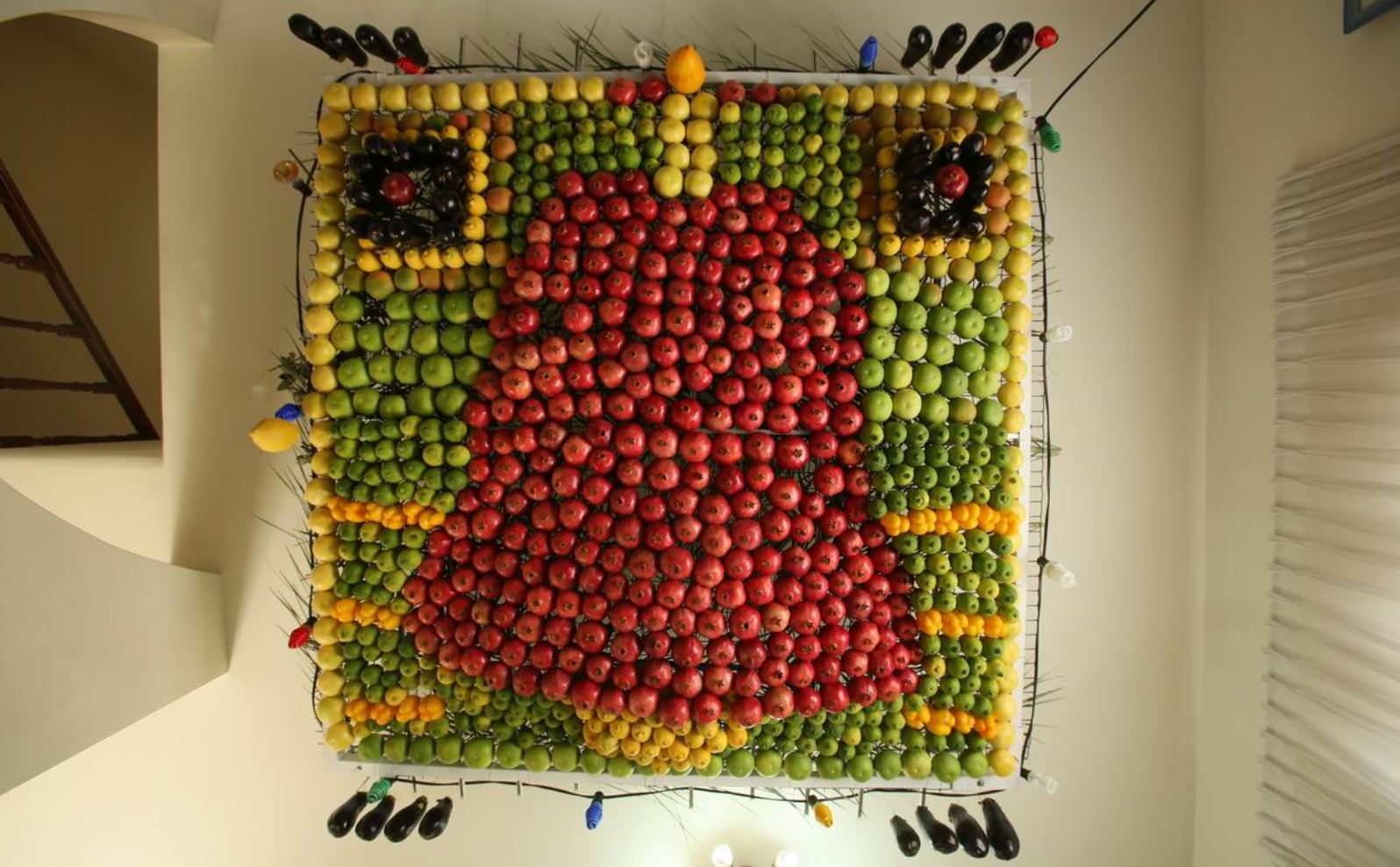 A Samaritan sukkah. Photo by Ori Orhof/Israelite Samartian Information Institute The Israelite Samaritan Community, a small religious minority group living on Mount Gerizim and in Holon, builds exceptionally dazzling sukkot – indoors, not outdoors — using the four species (see item above) and a huge geometric canopy of fruits. "In Samaritan tradition, the sukkot are meant to remind us of the Garden of Eden. The symbolism of Eden is expressed by covering the Samaritan sukkah with luscious fruit," writes Benyamim Tsedaka, head of the Israelite Samaritan Information Institute in Holon. 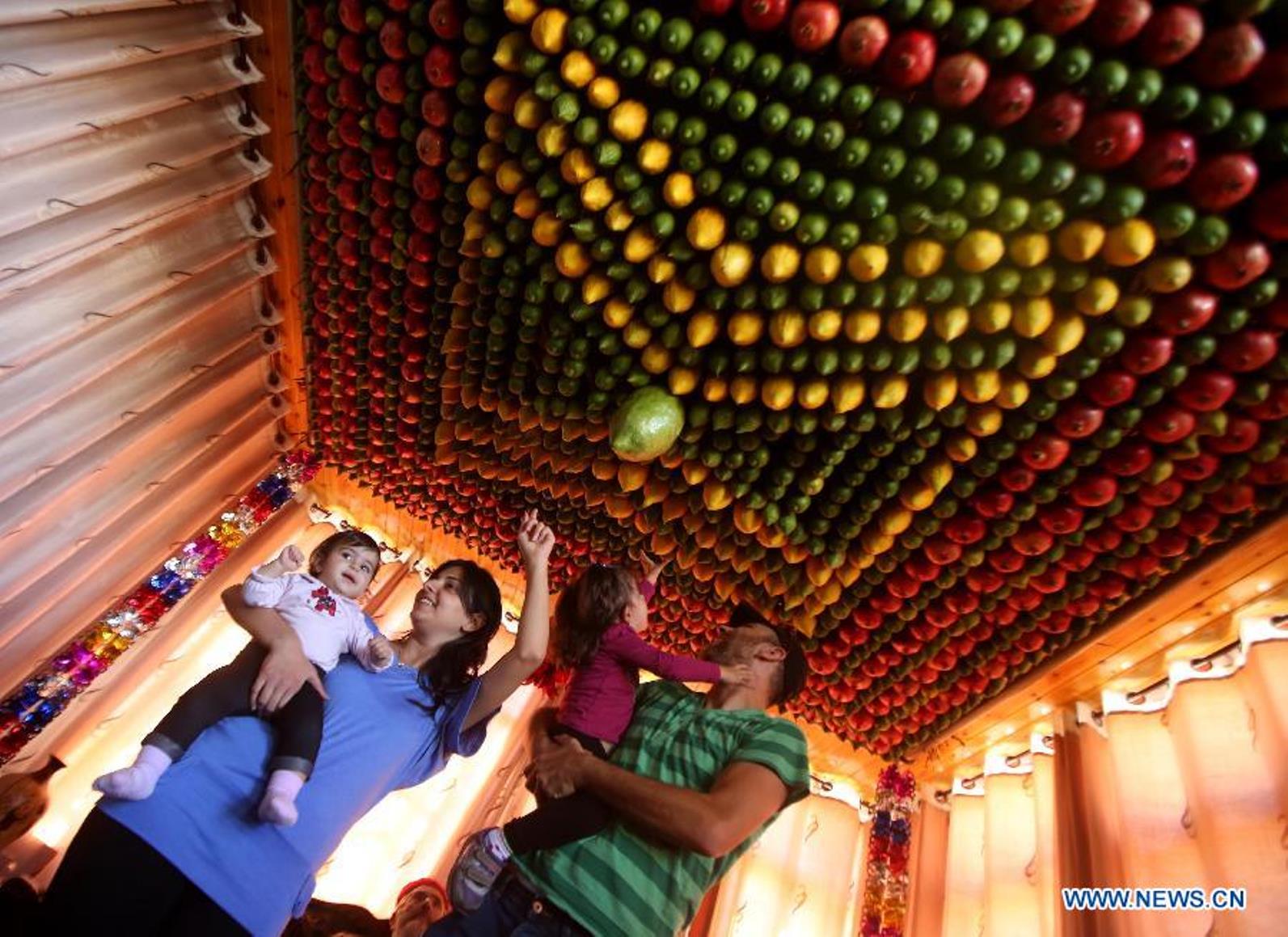 A Samaritan family celebrating Sukkot. Photo by Xinhua/Ayman Nobani - Holon municipality
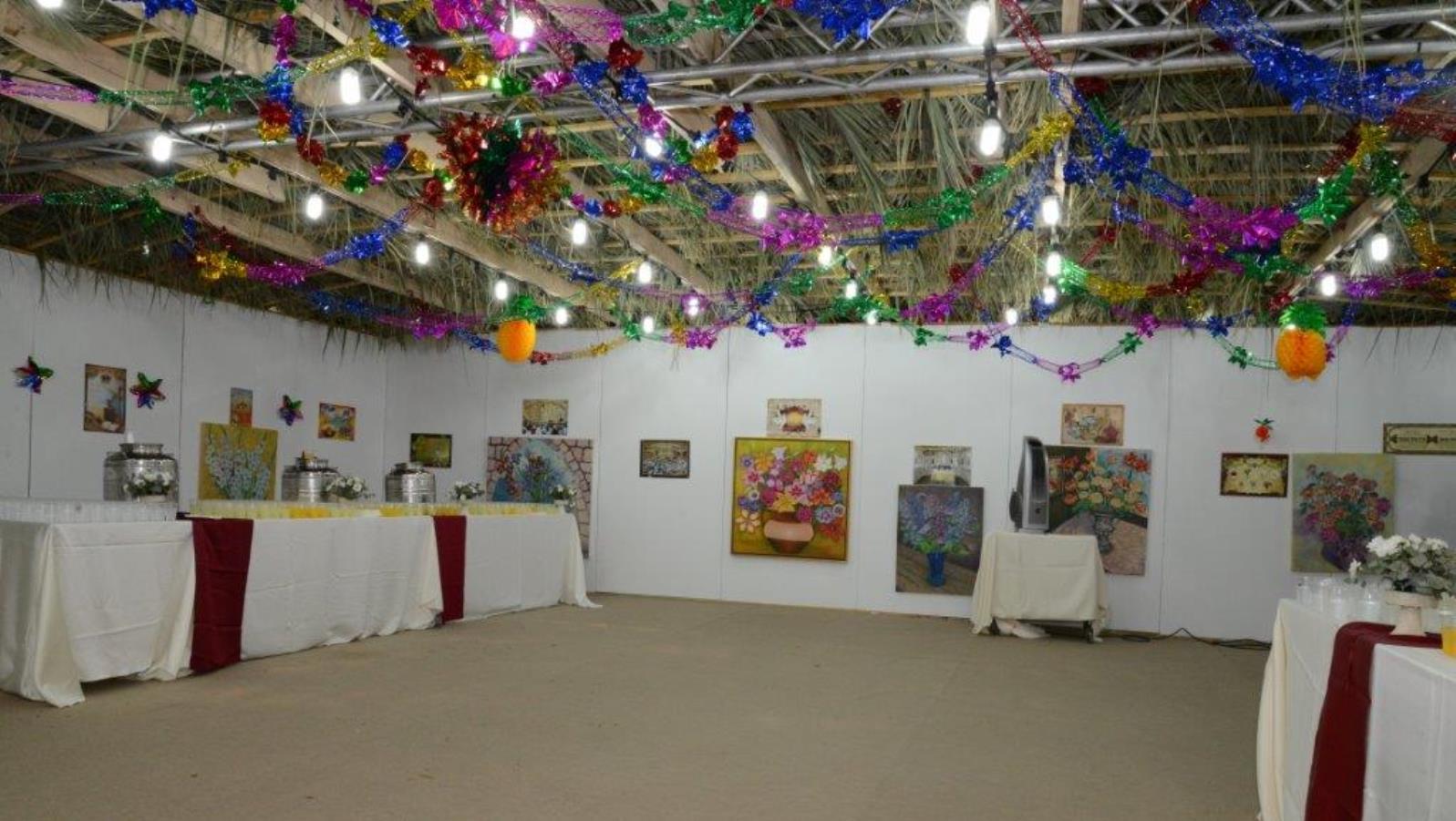 Holon's municipal sukkah. Photo by Eli Ne'eman Erected on the plaza of this seaside city's Mediatheque cultural center, the Holon municipal sukkah is open to visitors on the night after the first full day of Sukkot (October 17 this year) for a nosh and a meet-and-greet with local officials. A free show outside will be headlined by singing stars Gali Atari and Vardina Cohen. The sukkah accommodates 200 people at a time |
|
|
See you after the first Day Succout during Chol Amud on Friday
Love Yehuda Lave |
|
|
| | | |
 | | | | | |
|  |
|
| |
|